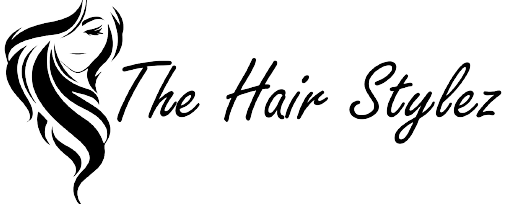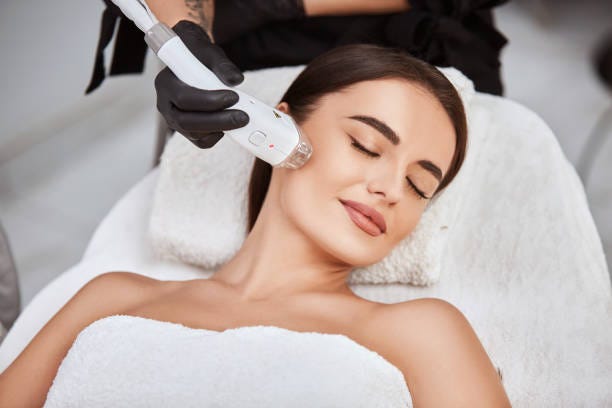Introduction
Laser hair treatment has emerged as a revolutionary solution for those seeking a long-lasting and effective way to manage unwanted hair. This non-invasive technology has gained widespread popularity recently, offering a safe and precise method to target and eliminate hair follicles, resulting in smooth, hair-free skin. Whether you’re struggling with excess facial hair, stubborn underarm hair, or desire a more streamlined body appearance, laser hair treatment may be the answer you’ve been searching for.
In this comprehensive guide, we’ll delve into the intricacies of laser hair treatment, exploring how it works, its benefits, and the different types of treatments available. We’ll also cover what to expect during a laser hair treatment session, essential preparation steps, and crucial aftercare tips to ensure optimal results. Additionally, we’ll address common misconceptions, help you find a reputable clinic, and provide insights into this innovative solution’s potential side effects, cost, and affordability.
If you’re interested in enhancing your beauty routine, check out our comprehensive guide on the science and benefits of laser treatment for hair removal.
How Does Laser Hair Treatment Work?
Laser hair treatment targets the melanin (pigment) in the hair follicles. The high-intensity light emitted by the laser is absorbed by the melanin, which then converts the light energy into heat. This heat damages the hair follicle, impairing its ability to produce new hair growth.
The process is highly targeted, ensuring only the unwanted hair is affected, leaving the surrounding skin unharmed. The laser’s precision allows it to selectively target the hair follicles, making it an effective solution for many body areas, from the face to the legs and everything in between.
Different Types of Laser Hair Treatment
Several types of laser hair treatment are available, each with unique characteristics and suitability for different skin and hair types. The most common types include:
- Diode Laser: Diode lasers are known for effectively targeting and removing both fine and coarse hair, making them a versatile option for a wide range of individuals.
- Alexandrite Laser: Alexandrite lasers are particularly effective on lighter skin tones and work best on fine, light-colored hair, such as blonde or red hair.
- Nd: YAG Laser: Nd: YAG lasers are designed to work effectively on darker skin tones, as they are less likely to cause discoloration or damage to the skin.
- IPL (Intense Pulsed Light): IPL devices use a broad light spectrum to target and turn off hair follicles, making them suitable for those with more extensive treatment areas.
Your skin type, hair color, and personal preferences will be crucial in determining the most appropriate laser hair treatment for your needs. It’s essential to consult with a qualified professional to ensure that you receive the most effective and safest treatment for your requirements.
Preparing for a Laser Hair Treatment
Properly preparing for your laser hair treatment is essential to ensuring the best possible outcome and minimizing the risk of complications. Here are some critical steps to consider:
- Discontinue Certain Medications: Inform your healthcare provider about your medications or supplements. Some may increase photosensitivity and should be avoided before the treatment.
- Shave the Treatment Area: Shave the treatment area a day or two before your appointment to ensure the laser can effectively target the hair follicles.
- Avoid Waxing or Plucking: Refrain from waxing, plucking, or using other hair removal methods in the treated area for at least 4-6 weeks before the laser treatment.
- Hydrate and Nourish Your Skin: Maintain a healthy skincare routine, including gentle cleansing and moisturizing, to ensure your skin is in optimal condition for the treatment.
- Communicate with Your Provider: Be open and honest with your healthcare provider about any concerns or questions, as they can provide personalized guidance to ensure a safe and successful treatment.
By following these preparation steps, you can help maximize the effectiveness of your laser hair treatment and minimize the risk of any potential complications.
Aftercare Tips for Laser Hair Treatment
After your laser hair treatment, following the recommended aftercare instructions to support the healing process and maintain the best possible results is crucial. Here are some essential tips to keep in mind:
- Avoid Sun Exposure: Protect the treated area from direct sun exposure for at least 2-4 weeks, as the skin may be more sensitive during this time.
- Use Gentle Skin Care: To keep the skin hydrated, cleanse the area gently with a mild, fragrance-free cleanser and apply a soothing, fragrance-free moisturizer.
- Avoid Irritants: Steer clear of harsh or abrasive products, as well as activities that may irritate, such as hot showers, saunas, or vigorous exercise, for the first few days after the treatment.
- Monitor for Side Effects: Be vigilant for any side effects, such as redness, swelling, or discomfort, and contact your healthcare provider if you have any concerns.
- Maintain Treatment Schedule: Follow your healthcare provider’s recommended treatment schedule to ensure optimal results and maintain the desired level of hair reduction.
Adhering to these aftercare guidelines can support the healing process, minimize the risk of complications, and allow you to enjoy your laser hair treatment’s long-lasting, smooth results.
Benefits of Laser Hair Treatment:
Laser hair treatment offers a multitude of benefits, making it a popular choice among individuals seeking a long-term solution for their hair removal needs. Some of the key advantages include:
- Unlike traditional methods like shaving or waxing, laser hair treatment can provide long-lasting results, significantly reducing the amount of hair growth over time.
- Laser hair treatment can be used on various body areas, including the face, underarms, legs, bikini line, and more, making it a versatile solution for addressing diverse hair removal needs.
- By removing unwanted hair, laser treatment can enhance the skin’s overall appearance, creating a smoother, more uniform texture.
- Laser treatment can be more efficient than traditional hair removal methods, saving you time and effort in the long run.
- Laser hair treatment can help prevent the formation of ingrown hairs, a common issue with other hair removal techniques.
FAQs
- How many sessions are typically required for laser hair treatment?
The number of sessions required can vary depending on your hair and skin type, the treatment area, and the individual’s response. Generally, 4-6 sessions are recommended, with treatments spaced 4-8 weeks apart.
- Does laser hair treatment work on all skin and hair types?
While laser hair treatment can be effective on various skin and hair types, certain laser technologies may be better suited for specific combinations. Your healthcare provider will evaluate your characteristics and recommend the most appropriate laser technology.
- Is laser hair treatment painful?
Most people describe the sensation as mild, stinging, or snapping, which is generally well-tolerated. However, some individuals may experience more discomfort, especially in sensitive areas. Your provider can offer options to manage pain, such as using a numbing cream or cooling devices.
- How long does it take to see results from laser hair treatment?
You may begin to notice a reduction in hair growth after the first few sessions, but the full results typically take several treatments to achieve. Most individuals see a 10-25% reduction in hair growth after each session, with the final results becoming more apparent throughout the treatment plan.
- Is laser hair treatment safe for pregnant women?
It is generally recommended to avoid laser hair treatment during pregnancy, as the safety for the developing fetus has not been conclusively established. It’s best to consult with your healthcare provider to determine the appropriate course of action.
Conclusion
Laser hair treatment has emerged as a transformative solution for individuals seeking a long-lasting, effective, and precise method for managing unwanted hair. This non-invasive technology offers many benefits, from permanent hair reduction to improved skin appearance and self-confidence.
By understanding the science behind laser hair treatment, the different types of treatments available, and the essential steps for preparation and aftercare, you can make an informed decision about whether this innovative solution is the right fit for your personal needs and goals.

